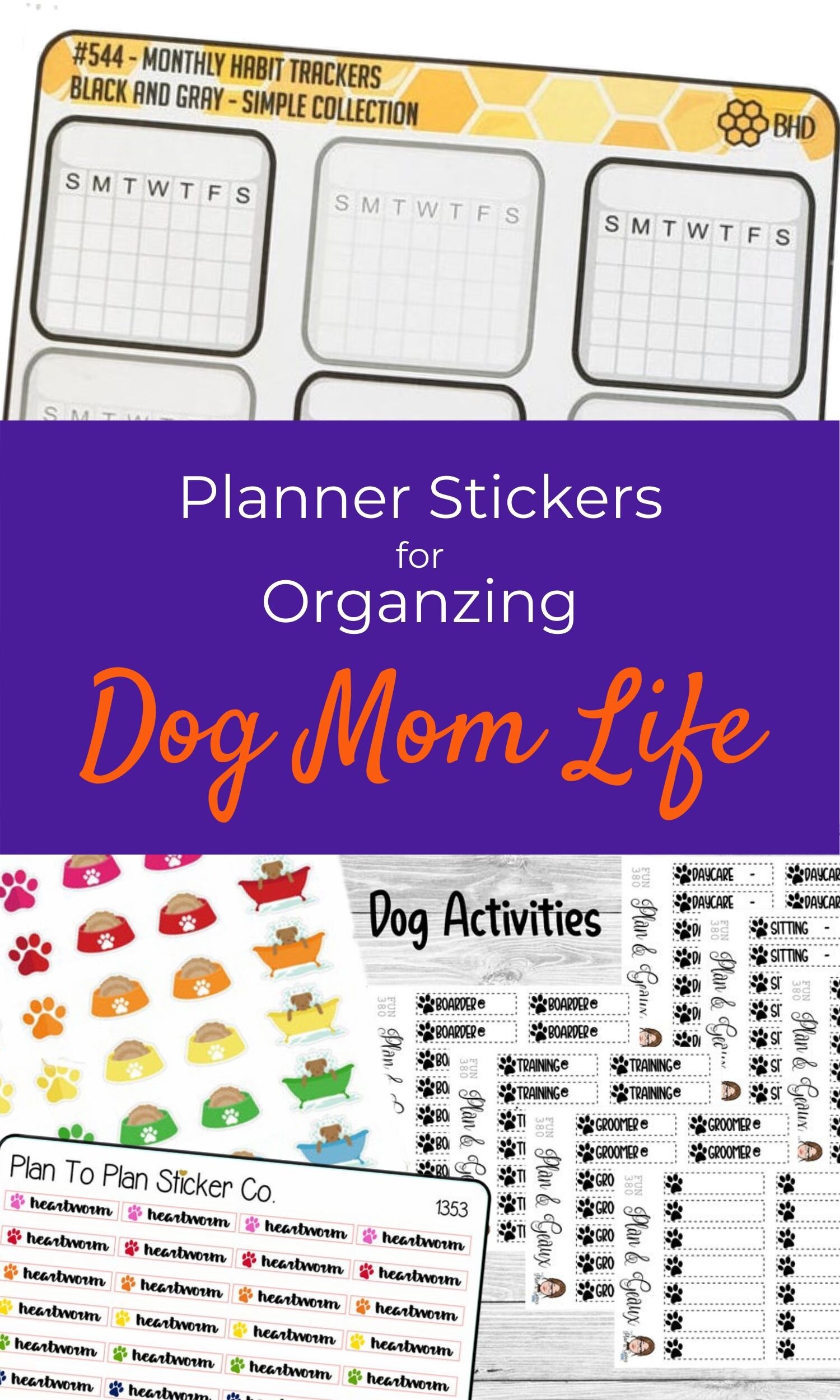Diagnosing Our Labradoodle Puppy with Addison's Disease
/Life with our new dog Bernie McSquare hummed along for three months. When he began experiencing nausea, fatigue, and anxiety, Matthew and I had no idea that these common symptoms would lead to the uncommon diagnosis of atypical Addison's Disease.
This post may contain affiliate links, which means at no additional cost to you, I may earn a small commission if you click through and purchase something. Please see my Affiliate Link Disclosure policy for more details.
Stress Affects Our Smiling Dog
Over 2016's Labor Day weekend, Matthew traveled out-of-town to visit his mom, a trip from Thursday to Monday.
He was gone for just four days, but I could see how his absence negatively affected Bernie.
When we'd come home from our walks, Bernie would stop and look into the parking lot waiting to see Daddy drive up. He'd want to sit on the sidewalk for several minutes expecting to see the Land Rover pull up any minute.
I tried to play with him more and give extra snuggles, but our little guy wasn't the same happy Doodle. He was also teething and starting to lose a few puppy teeth. These stressors began impacting his health.
Addison's Disease: The Great Pretender
Saturday night I woke up just after 3am to the sound of Bernie throwing up. He vomited some food with a few pieces that looked like they could be plant parts. Given the small volume, I decided not to worry.
Then shortly after 4am, I woke again to the same sound. However, this time I thought I saw blood. I grabbed a white washcloth and pressed it on top of the vomit to soak up what I could. I got most of the debris up and could clearly see specks of bright red blood.
Bernie and I were off to the emergency vet.
After a comprehensive exam, the vet determined that Bernie was a bit dehydrated likely from vomiting twice in such a short period of time. His vital signs were all good, though. The vet did notice that one of his puppy teeth was cracked, so it was possible that the small amount of blood may have come from the tooth.
The vet administered subcutaneous fluids along with an anti-nausea medicine. She gave us the option of x-rays, but she couldn't guarantee if they'd find anything. She looked at the white washcloth that I had placed flat in a Ziploc bag, and didn't seem overly concerned by the small amount of blood I had sopped up, which certainly made me feel better.
Dogs eat things they shouldn't. Since I was able to stay home on Sunday and Monday to monitor his progress, she was comfortable sending him home with medications to settle his tummy. If he vomited any more, I was advised to bring him back in.
Bernie and I headed home just before 7am feeling much better, but tired. He bounced back right away. Plus, he loved the bland chicken, rice, and cottage cheese diet he received over the next few days.
A note about household supplies: I purchased these 24 white wash clothes from Amazon for cleaning up puppy messes. My initial impression of their quality matched my expectation. These wash clothes would never be left out for guests, but were perfectly suitable for clean up jobs. After four years, they may not look pretty, but they're still holding up. I still use them every day for wiping the food and water bowls for the dogs.
When I realized that I should probably bring Bernie's vomit sample with me to the emergency vet, I had to find a way to transport the vomit-soaked wash cloth without grossing me or anyone else out. The gallon-sized Ziploc bag was the perfect size for laying the wash cloth flat, zipping close the top, and transporting the sample safely without any smell.
Symptoms Return: The Second Stressful Episode
November 2016 rolled around. Our family life had settled into a comfortable routine.
Matthew worked 12-hour overnight shifts at an area hospital, so he was around during the day for whatever Bernie might need. During the school year 2016-17, I worked part-time, so I was home frequently as well.
Bernie was used to having the pack around, so on one of the rare days that Matthew and I were gone simultaneously, he stressed out. Matthew came home in the early afternoon. Shortly after, Bernie was throwing up a little bit of blood.
Matthew grabbed a white washcloth to sop up the blood specks, placed it in the Ziploc bag, and headed with Bernie to the emergency vet again. He texted me, so I would know once class was over. I met him at the emergency vet clinic right after they had performed their comprehensive exam and taken a few x-rays.
When we went into the exam room, Dr. Novakowski explained that nothing seemed out-of-the-ordinary. Bernie's vitals were good and nothing was flagged on the x-ray. She recommended labs.
I asked if there was any possibility that our absence could have provoked anxiety that lead to his vomiting blood. We gave her the picture of our life with Bernie and how much time he spends with us. We take him with us to many places, so we're together a lot! And being a high energy Doodle, Bernie definitely shows his enthusiasm, but also his anxiety.
She suggested that he might have Addison's Disease. She made it clear that this diagnosis was rare, usually in slightly older female dogs. But being a Labradoodle, his general genetic profile is at a higher risk for potentially developing Addison's Disease.
The cortisol level test was not cheap, but making the decision to test his cortisol levels was easy. We were hoping to rule out at least one possibility for the blood in his vomit.
That night Matthew began researching Addison's Disease in dogs.
As a critical care nurse & former paramedic, Matthew already knew how Addison's Disease works with humans, but the symptoms, diagnosis, and treatment pathways differ between humans and canines.
He was also looking for information that would be accessible for me, someone with no medical background. He found an article "Detecting Addison's Disease in Your Dog" in Whole Dog Journal that I found incredibly helpful.
The next day we heard back from Dr. Novakowski. Unfortunately, Bernie's cortisol levels were low. She suggested taking him to our regular veterinarian for the ACTH Stimulation Test to determine if the low levels were caused by Addison's.
The Definitive Atypical Addison's Disease Diagnosis
We set up the appointment, dropped Bernie off early one morning at our vet's, and picked him up about two hours later.
The results were conclusive. Bernie's cortisol level remained low even with ACTH stimulation. Since his sodium and potassium levels had been normal all along, he was diagnosed with Atypical Addison's Disease.
On the positive side, this diagnosis means that for now Bernie is capable of producing cortisol. He just doesn't produce enough of it.
The vet recommended a low dose of Prednisone every other day. If we know that Bernie is experiencing or will experience any stressful events, we can give an extra dose of Prednisone to support his body continuing to produce its own cortisol.
Also comforting was Dr. Carlton's assessment that Bernie most likely developed Addison's Disease from an adrenal gland infection when he was younger. While Poodles are one of the canine species genetically predisposed to developing Addison's Disease, there's not currently a specific canine genetic test.
The fact that his Addison's likely had no connection to his parents was a huge relief. We were already thinking about adopting another puppy from Crawford Doodles, so Bernie could have a sibling. Lucy and McQueen Crawford make such beautiful sweet-tempered Doodles, we just had to expand our pack!
Are you scared your dog may have Addison’s Disease?
Since starting our blog in the summer of 2017, I have heard from many pet parents who have read Bernie’s story, and fear their dog may have Addison’s Disease too, but they’re just not sure about next steps.
If you need help with resources & education, and crave a supportive community of other dog parents who have been where you are now, I recommend without reservations that you tour the website for Canine Addison’s Resources & Education (CARE), a 501(c)(3) non-profit organization. They created the Symptoms Infographic I included earlier in this post.
Their documents page is immense, but organized incredibly thoughtfully. At the top there are the most frequently requested documents to support the overwhelmed dog parent. As you keep scrolling, you’ll see links to other articles, including articles about the various medications that may be used to treat Addison’s Disease in dogs.
I joined their FREE Facebook Support Group in May 2020, and I wish I had found them sooner. This community of dog lovers is dedicated to making sure all A-dogs live their best doggy life! Members pose all sorts of questions, usually when their dog is first diagnosed and any time medications may be adjusted. Answers flow in, usually with follow-up questions to clarify pertinent details.
Sometimes people join and leave a few days later because the diagnosis is not Addison’s Disease. While this situation is rare, people in the group always wish the parting dog parent well because we all know how frustrating it can be to figure out what’s going on with your dog.
Bottom line: you do not have to go through the diagnosis and treatment of your dog alone! Once your dog is diagnosed with Addison’s Disease, you’ll be surrounded by people who get how scary an Addisonian Crisis is. Most importantly, once your dog’s medications are adjusted, he or she will return to all the activities they loved before their Addisonian Crisis.
If you're looking for more information on how we manage Bernie's Atypical Addison Disease, please refer to these posts:



































